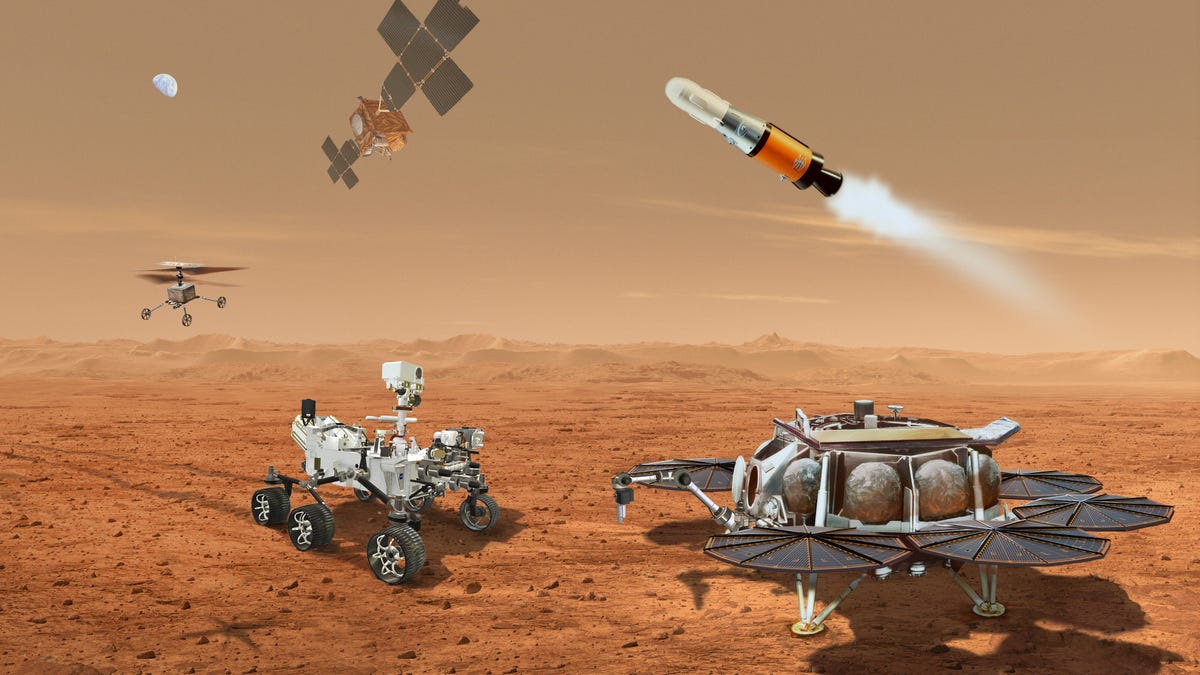
Since it landed on Mars in 2021, NASA’s Perseverance Rover has been pottering around the red planet, doing what Dad does at Costco: quietly hoovering up samples. And just like Dad does with those tasters of jumbo shrimp, Perseverance is already preparing to get those samples home.
It is part of the Mars Sample Return Program, a years-long mission between NASA and the European Space Agency that will bring to Earth the first-ever specimens of rock and dust collected from the Martian surface, as well as (hopefully) a vial of Martian atmosphere. The goal is to bring the samples back by 2033, with many interim steps along the way.
The complex mission will send a new lander that will touch down on Mars, carrying two Ingenuity-style helicopters and a sample return rocket. The plan is for the Perseverance rover to drive its samples to the lander, with the helicopters acting as backup.
Once the specimens arrive at the lander, they’ll be handled by a series of robots and transferred onboard the 3-meter-tall Mars Ascent Vehicle. Then they’ll blast into Martian orbit to meet ESA’s Earth Return Orbiter for the journey home.

This illustration shows the bounty of robots required to pull off the Mars Sample Return mission.
NASA/JPL-Caltech
It’s a complex mission with a lot of moving parts. In our latest video in the CNET Explains series, we look at what it takes to get pieces of another planet back to Earth.
We break down the mission step by step, looking at all the autonomous robots that need to work together flawlessly on a planet up to 400 million miles away. And we find out why a few precious vials of Martian material could unlock the secrets of our nearest planetary neighbor and give us physical evidence of ancient life elsewhere in our solar system.
For a deep dive into the Mars Sample Return mission, check out the video above.
